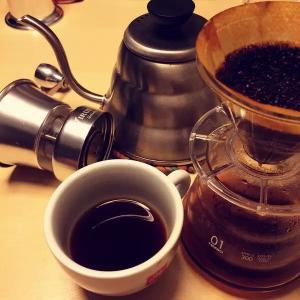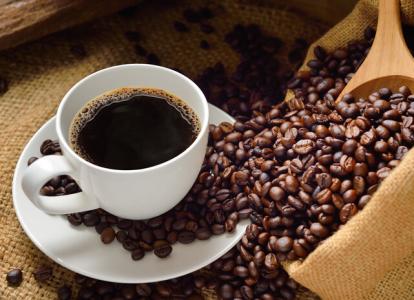Coffee study: can you tell Flavor from Taste in black coffee?
Follow the caf é (Wechat official account vdailycom) and found that Beautiful Cafe opened a small shop of its own.
Taste, flavor and aroma are closely related to coffee, wine, food and other fields, but to a certain extent they are not interchangeable. Let's sort out the differences one by one:

What is Taste?
Taste generally refers to the feeling that occurs in the mouth. It refers to all the feelings that our tongues and mouths feel when they come into contact with food (drink).
Our tongues have two kinds of "receivers":
The first kind: taste buds. It covers the whole tongue and can be used to taste food (drink).
The second kind: taste. It is sensed through the peripheral nerves above our mouth and tongue.
* Taste: mainly focus on sour, sweet, bitter, spicy and salty experiences, and there are two flavors that can also be taste: fresh and metallic.
* Mouth-feel: mainly focus on feeling stickiness, temperature, object size, pain, needling, touch and so on.
What is Aroma?
Aroma is a word often used to express the smell of food. The so-called smell is something that is volatile in the air and can be smelled by our nose. For example, alcohol volatilizes easily and gives off many kinds of odors, which is why perfume also contains alcohol more or less.
The part of our brain that receives smell is called the limbic system, which is located at the front of our brain. It is also involved in the processing of emotion, behavior and long-and short-term memory. And that's why a certain smell brings back memories.
How did we smell the smell? One is through our noses, and the other is through our throats into the nasal cavity. Some studies have also shown that our right brain is better at identifying odors, which may explain why you always think your right nostril is more sensitive than the left one.
What is Flavor?
To put it bluntly, Flavor is a combination of aroma, taste and mouthfeel to express how you feel about what you eat or drink.
Summary
Taste: refers to the feeling in the mouth, including the tongue.
Aroma: the feelings that happen in our noses include all kinds of things we can smell.
The overall feeling brought by Flavor:Taste and Aroma
Important Notice :
前街咖啡 FrontStreet Coffee has moved to new addredd:
FrontStreet Coffee Address: 315,Donghua East Road,GuangZhou
Tel:020 38364473
- Prev

Coffee Learning: the Secret of balancing Coffee Fat and Taste
Espresso has mellow and rich multi-level flavor, and oil is almost the most prominent feature that distinguishes espresso from drip filtration and hand-brewed coffee. this paper explains in detail the composition and structure of oil and the influence of chemical and physical changes in espresso on coffee flavor. The composition of coffee oil (Crema) is
- Next

Coffee learning: coffee tasting is not as difficult as you think.
Following Cafe Review (Wechat official account vdailycom) found that since when did Beautiful Cafe open a small shop of its own, coffee flavor has become a must-talk between lovers and practitioners? Since when did coffee taste become a high-end coffee drinker? I don't pay much attention to this. Anyway, I just like to drink coffee every day. But
Related
- What is the meaning of lactic acid fermentation with coffee bean treatment?
- How to judge the state of foam by sound?
- How does the latte pull out the unicorn pattern? Come to get for a little trick to improve the flower pull!
- Will flower pulling affect the taste of the latte?
- Do you know the history of coffee?
- The difference between honey treatment and sun washing what is raisin honey treatment?
- What kind of milk can a novice use to make coffee foam to keep the foam longer? The correct method and skills of milking tutorial sharing
- Why do washed coffee beans taste sour? Flavor characteristics of washed Coffee
- Introduction to the skill of how to practice the size and height of water injection around the circle of hand-brewed coffee
- How do beginners practice coffee flower drawing from scratch?

